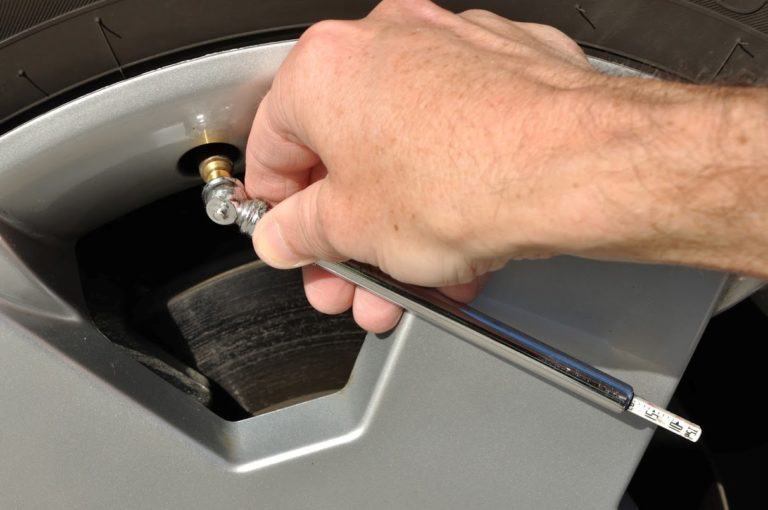A tire pressure monitoring system, or TPMS, is standard in vehicles built since 2008. Sensors detect when tire pressure falls below normal and prompts an indicator light on your dashboard. This warning light notifies you that one or more tires may need inflation. But there’s more to your TPMS than meets the eye. Here’s what you should know about this important safety feature.
TPMS Is More Than Just a Safety Feature
A system that monitors and notifies you of low tire pressure is an important safety feature. Under-pressurized tires are dangerous because they can lead to blowouts. Braking distance increases considerably when you drive with under-inflated tires. Additionally, tires that lack sufficient air perform poorly on the road because they lack grip and responsiveness.
But TPMS is more than a safety feature. Tires with low pressure can become a glut on your fuel economy and your pocketbook. Softer, under-inflated tires force your engine to exert more energy to propel your car forward. Insufficient air in your tires drags your fuel economy down as much as 3 percent.
Your tires will also experience heightened and uneven tread wear, which can’t be remedied with a simple tire rotation. A complete new tire purchase becomes necessary.
TPMS Detects Pressure One of Two Ways
TPMS systems rely on one of two different methods to detect tire pressure in your car.
Direct Method
Each wheel houses a pressure sensor that transmits tire pressure information to your dashboard in the event of low pressure. Unfortunately, this direct detection method is exposed to weather and other environmental factors that can interfere with readings. Also, batteries that power these sensors can malfunction or quit working over time.
Indirect Method
Rather than an add-on pressure sensor for each tire, indirect pressure methods determine pressure with the help of existing ABS and ESC wheel speed sensors. These sensors measure small differences of tire diameters while in motion. Softer or under-inflated tires present slightly smaller diameters than normal tires and prompt the system to transmit a signal to your dashboard.
Different car makes and models use either of these methods to let you know one or more tires are low on air.
TPMS Light Can Malfunction
Sometimes the signal on your dashboard remains lit even after you check pressure and inflate your tires. Several reasons for this phenomenon are easy to check.
Recent drop in temperature
Tire pressure drops around a pound for each 10 degree drop in temperature. A sudden cold snap shortly after a tire fill may be the reason your light stays on. Check your pressure every month with a reliable gauge to make sure pressure stays consistent. The most accurate reading occurs before you start up your car and drive.
Slow tire leak
A signal light might stay lit if the tire has a slow leak. If you always fill your tires with air but still see the light on your dash, get your tires checked for a nail or other puncture that causes continual slow leaks.
Recent tire replacement
A change of tires can inadvertently damage the TPMS in the wheel rim. Next time, check the pressure light right after a tire replacement to rule out a false reading.
A TPMS relies on mechanical components that are capable of failure. If you still see a pressure warning light after you fill the tires and rule out a slow leak, chances are the TPMS is damaged. But don’t drive around with a low pressure light still on.
Only a reliable mechanic is trained to access and diagnose your TPMS. Visit Evans Tire & Service Centers for assistance when you experience problems with your tire pressure monitoring system.

